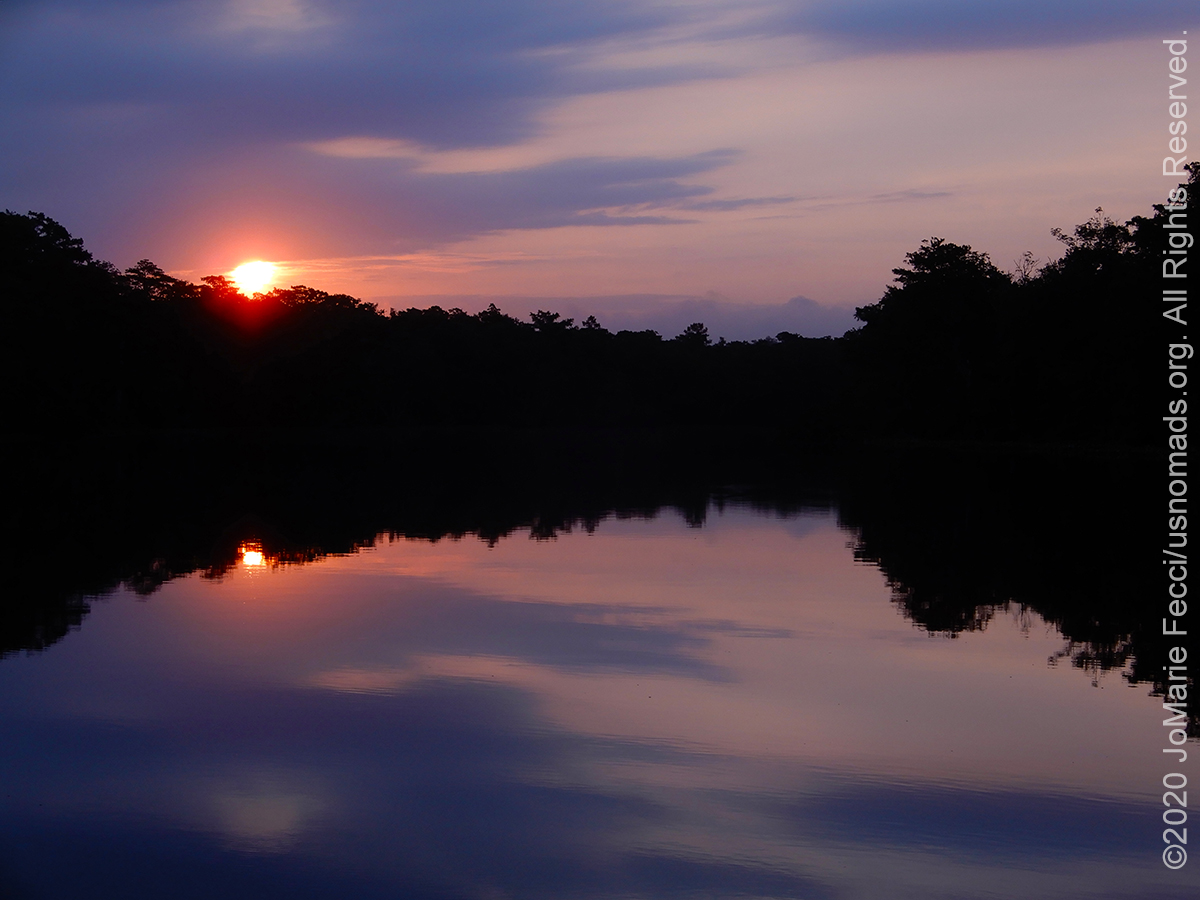
CHINCOTEAGUE, VA (17 July 2020) — The coolness of early morning woke me well before sunrise, and I felt well-rested as I made my way to the river bank to wait for the sun. Slowly the sky began to lighten and the water changed colors in a pastel wash of pinks and lilacs until finally the sun peeked over the trees and morning announced itself to the sound of the first birds chirping in the brush. It was time to break camp and get back on the road.
I was leaving the swamplands behind and heading for the coastal wetlands and barrier islands. I kept to the forest roads as long as I could, then picked up Highway 13, crossing from Maryland south into Virginia, before turning east towards the Atlantic. The Chincoteague National Wildlife Refuge is connected to the Assateague Island National Seashore and they share the barrier islands across the two states. I had chosen Chincoteague because I figured that the wildlife reserve would have less visitors than the more touristic beaches of the Assateague side. To reach the Refuge I would have to cross a series of bridges that connect the barrier islands to the main land over a marshy bay that is very wild and beautiful in its own right.
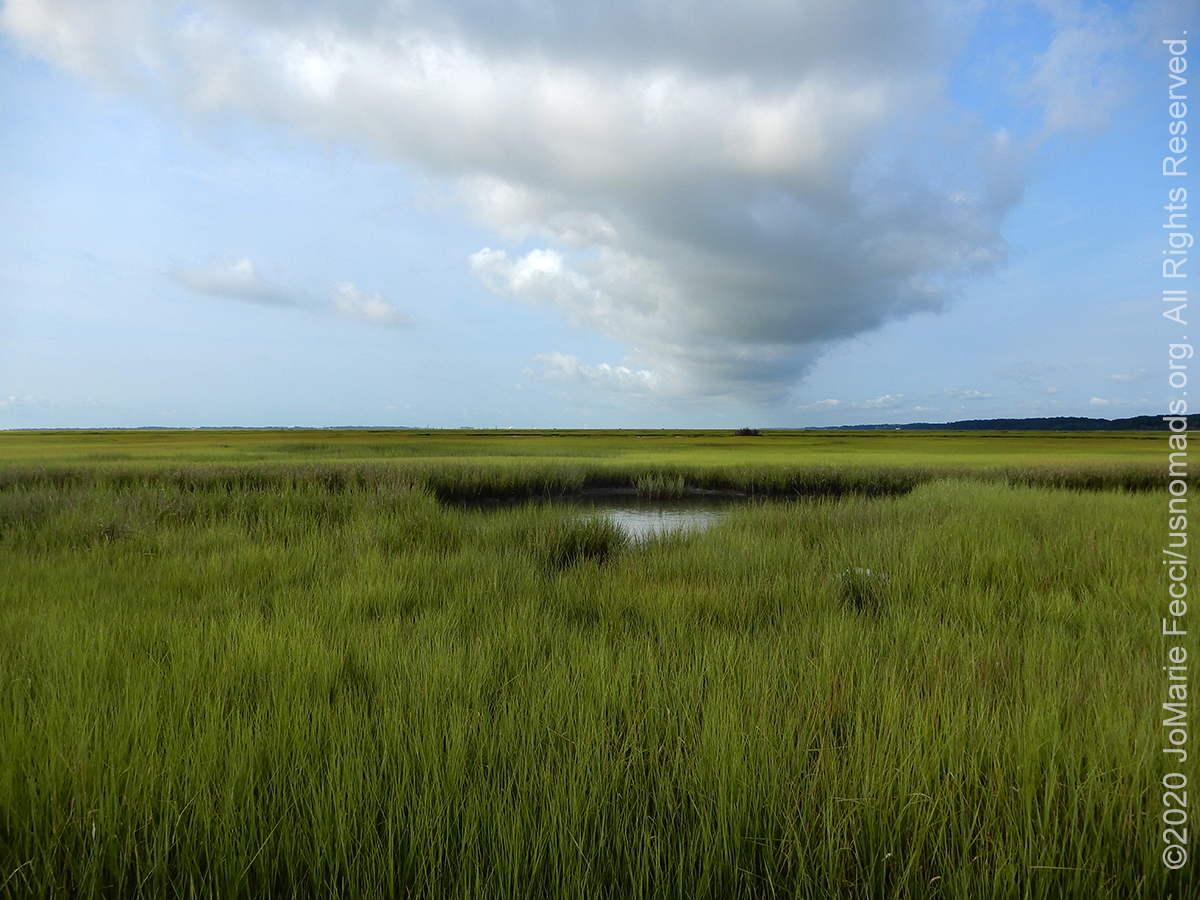
The sky was blue and bright and the green sea grass seemed to glow. I stopped to make a few photos before the causeway bridge to the island of Chincoteague. The island itself is populated and quite touristic but the refuge is actually on a small sliver of an island east of the populated one. They are connected via another causeway bridge. All around are wetlands. The area seems to be shared by vacationers and residents who still work on the water, and pleasure boats cruise side-by-side with fishermen harvesting commercial clam beds.
I made my way onto the island’s main street and continued to the refuge where I hoped to see the famous “Chincoteague Ponies.” These “wild” ponies are technically feral horses possibly descended from an original herd that was stranded here when a Spanish galleon shipwrecked en route to Peru in the 16th century. The ponies were made famous in the late-1940s through a series of novels by Marguerite Henry that featured “Misty of Chincoteague.” Today they are one of the main tourist attractions on Chincoteague and Assateague islands.
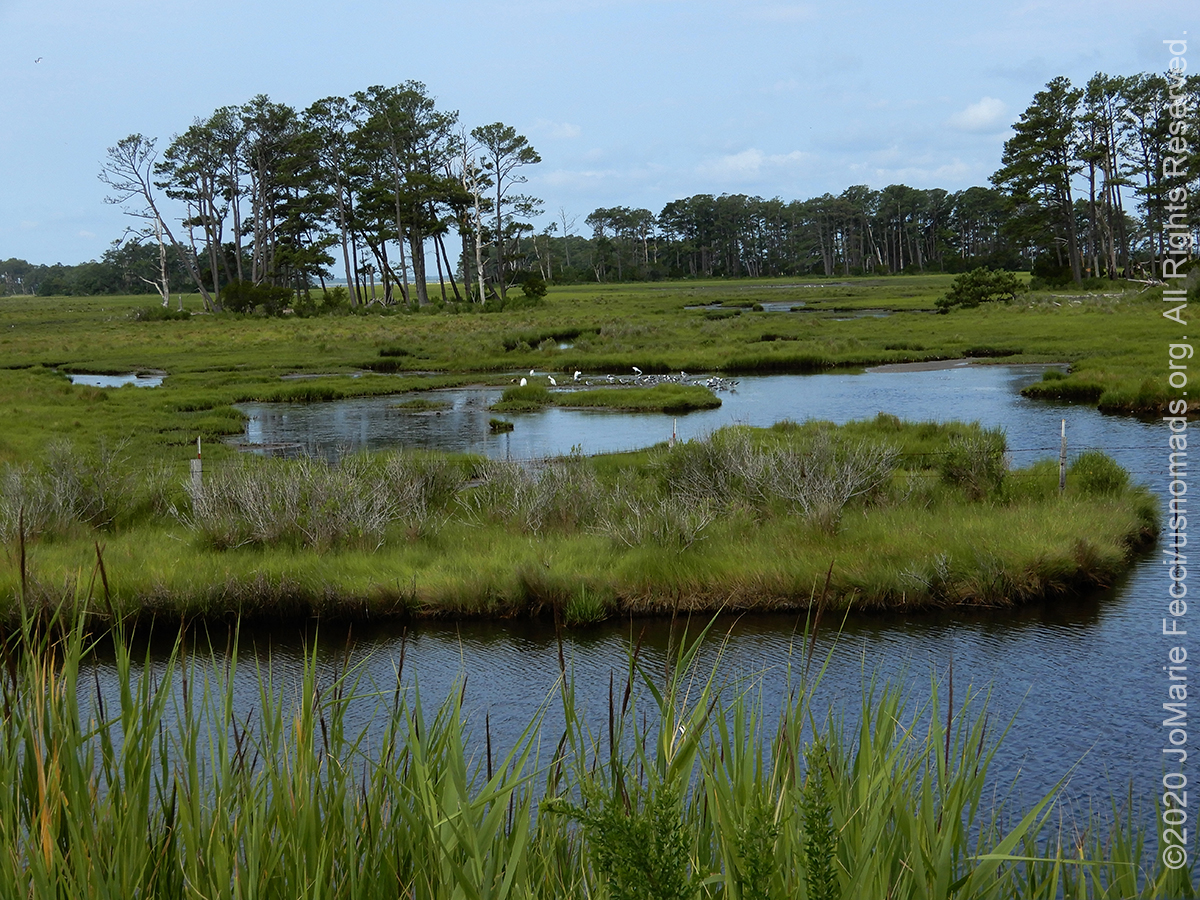
I had done my research and knew that without taking a guided boat tour, there were only two places that I might see the ponies on Chincoteague. The first was along the drive to the beach and the second was along a hiking trail through a woodland area. Driving to the first point, I stopped and scanned the horizon for anything that looked like it might be a horse. I saw a few egrets and a lot of other marsh birds, but no ponies. I wasn’t exactly surprised. The last time I had come here I didn’t see ponies either. This time I had been encouraged by someone’s quite hysterical social media post showing a pony on Assateague beach stealing some lady’s picnic lunch right off her blanket. I thought if the ponies come that close to people maybe I would see one. But that all happened on Assateague, which has more of the ponies and is not a wildlife sanctuary. Chincoteague only has about 80 ponies in its herd and the refuge manages the land with some discrete fencing that seems intended to keep the animals away from the road and away from people.
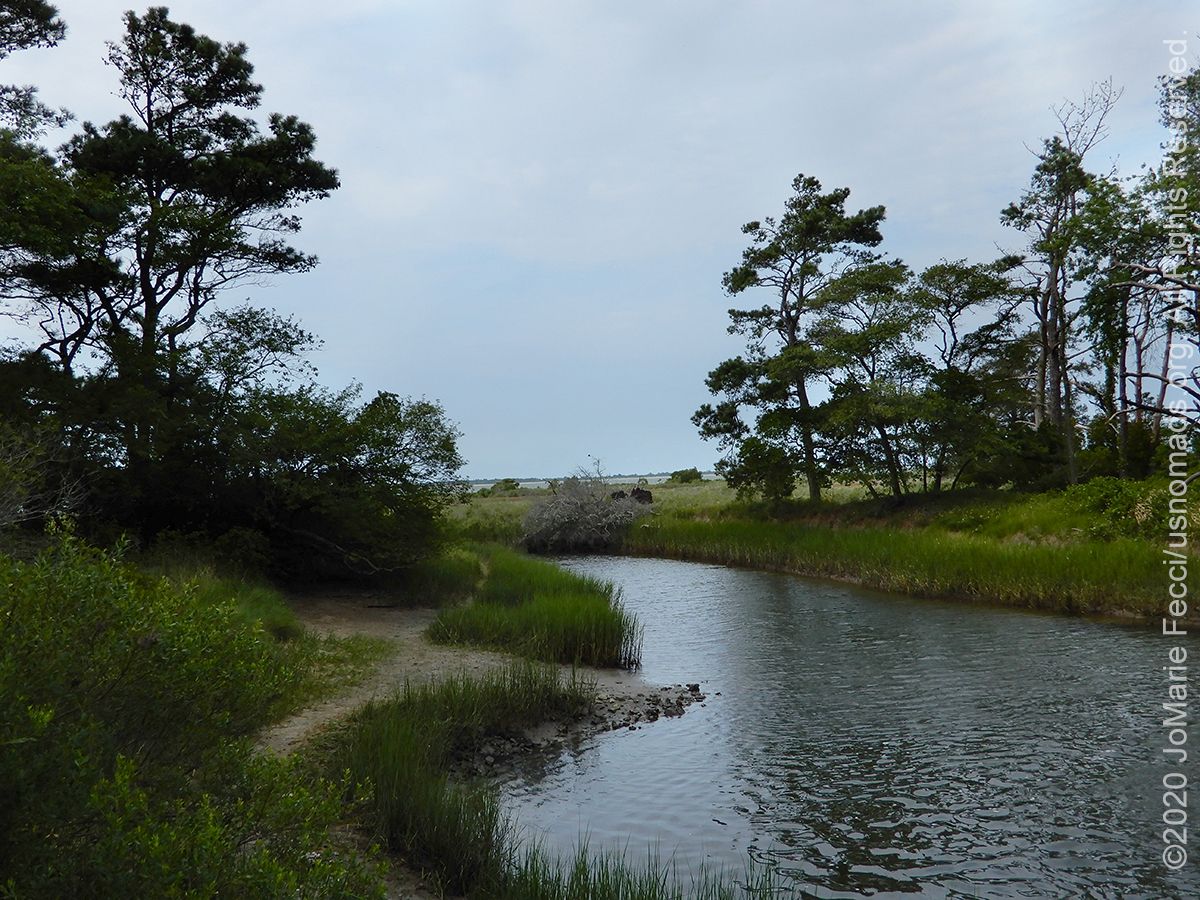
Continuing towards the Atlantic coast I stopped again at a place where I had photographed a Delmarva Fox squirrel once. There were no squirrels though I did get a nice shot of another egret. I would have stayed and photographed longer, but there were mosquitoes everywhere along the edge of the marsh. I realized that I had only ever been here in winter before, and hadn’t considered the mosquito problem. I got back in the Jeep in a hurry and drove to the trailhead for the hike to the other place where it might be possible to see the ponies. The walk was along a woodland trail which I figured would offer some great shade from the summer heat. It was shaded, but after half a mile I couldn’t bear it any more — the mosquitoes were swarming me every time I paused to take a photo. They were attaching themselves to my clothes as well as to my skin. My shirt was covered with them. I was slapping myself silly. I gave up and retreated to the Jeep trying to brush them all off so they wouldn’t get inside. These mosquitoes were definitely worse than the mosquitoes we have on Long Island or even the ones in the jungles of Colombia (in my memory at least).
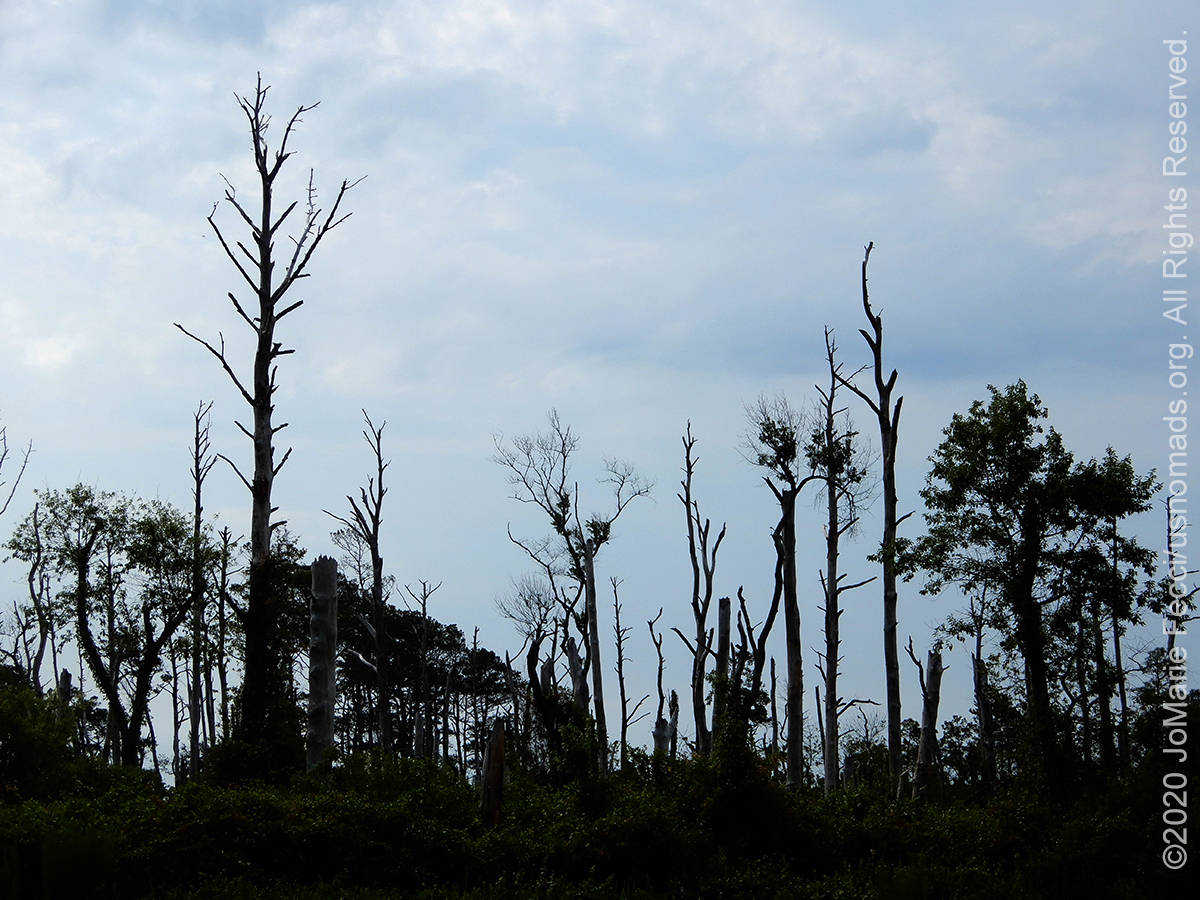
Between the oppressive heat and humidity and the swarms of mosquitoes I gave up on the idea of trying to spot ponies and decided to go to the beach instead. I remembered how incredibly beautiful it was there and how it felt to drive over this tiny narrow strip of sand that seemed barely wider than the Jeep surrounded by powerful water. The sense of smallness compared to the vastness of the ocean and the grandeur of nature. But it was different now. That had been in winter when there were no people here. Now in the height of summer the beach was teeming with people enjoying sun, sand and sea. I couldn’t even find a place to park.
Feeling a bit frustrated with the day, I headed back towards the town, retracing my route through the refuge. As I was driving out of the area, along the last clearing I looked off in the distance and saw the ponies! They were so far away I picked up the binoculars to be sure they were really ponies. They were just chilling out in their herd grazing, and though it was not a very exciting photo op. I took photos anyway, just to prove to myself that I saw them.
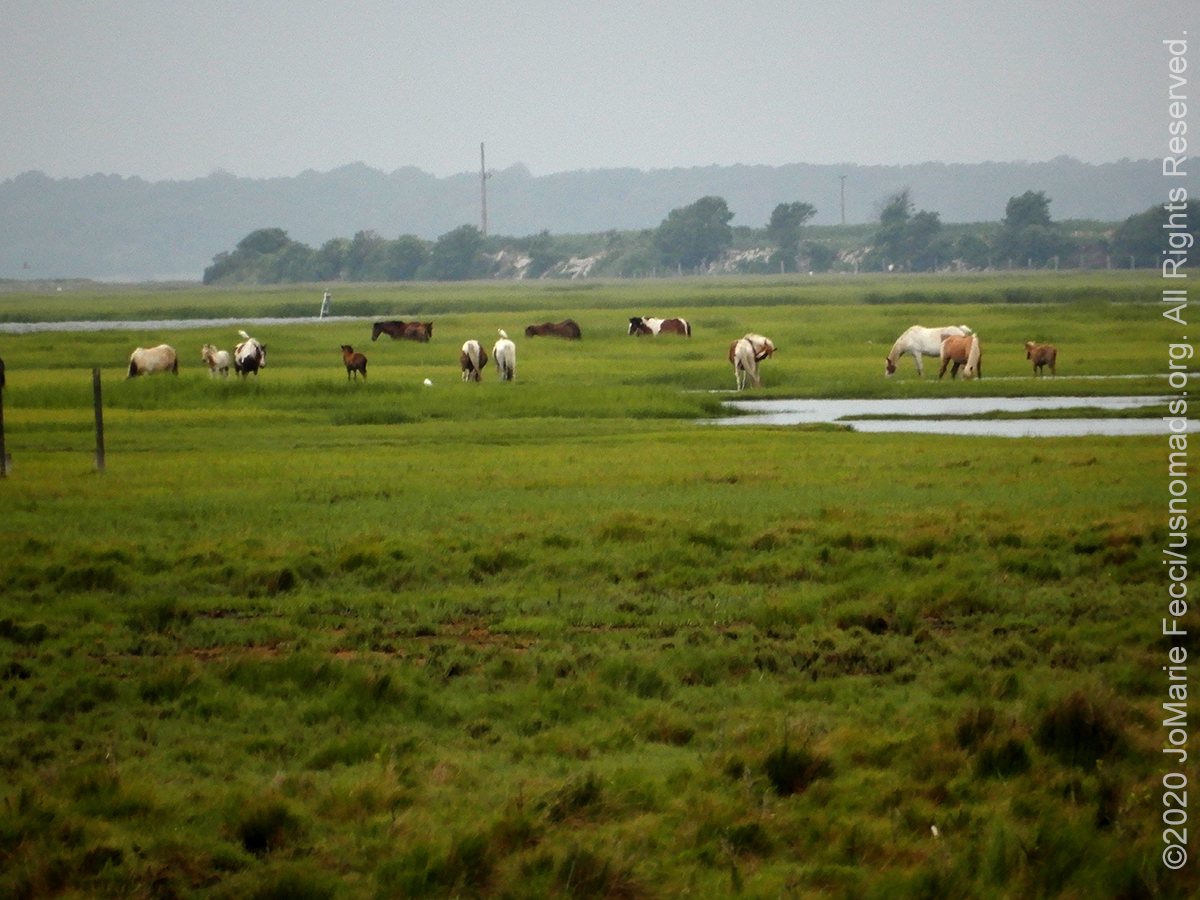
Later in the afternoon I returned to the refuge for a second loop around and the ponies were still there in the same distant place. The beach was less crowded and I was able to go for a walk, though not a drive, down it to see the Atlantic. People were in the water or playing on the shore and it was a typical beach scene so radically different from the “wilderness” beach I had experienced out here in winter. Someone had build an impressive sand castle. Seagulls hovered over the parking area looking for dinner scraps. A mother was trying to persuade her tired toddler to walk the rest of the way to the car. Yet, on the bay side there remained something of the wild feeling where there were some areas cordoned off to protect the dunes and marshlands behind them.
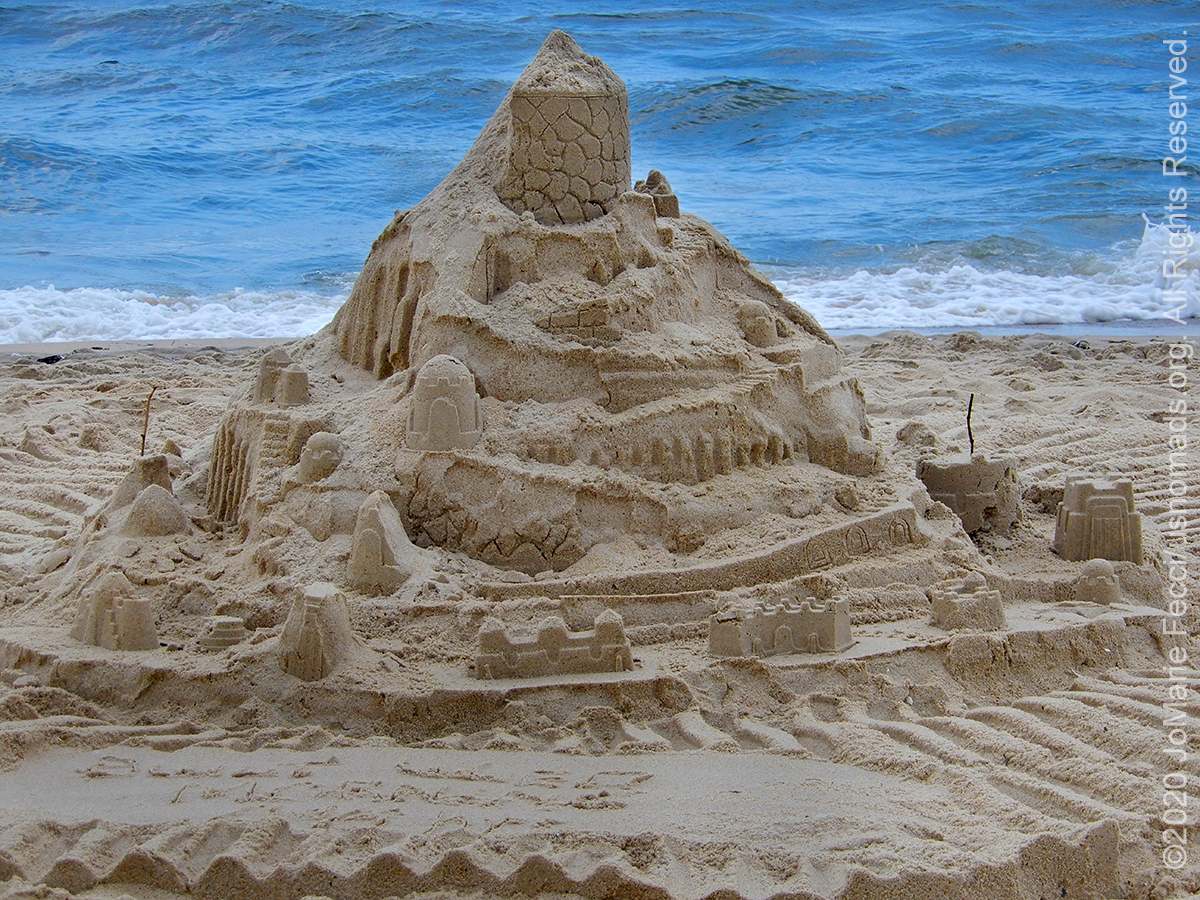
I finished up my day with a loop on the wildlife drive, hoping for closer ponies or some other wild life encounter. Again it was impossible to get out of the Jeep or even open the windows. The drive loop was fairly crowded with vehicles, making it impossible to stop for photos anyway. I was surprised at how many people actually were out traveling and visiting the refuge in spite of the pandemic (or maybe because of the pandemic). The truck ahead of me was stopped in the middle of the loop road, and when I got closer I saw that there were two deer on the edge of the brush — a mother and her fawn which still had the little white spots on its coat. The deer weren’t facing me and it was impossible to get a good photo of them, but it was cool to have seen them in any case.
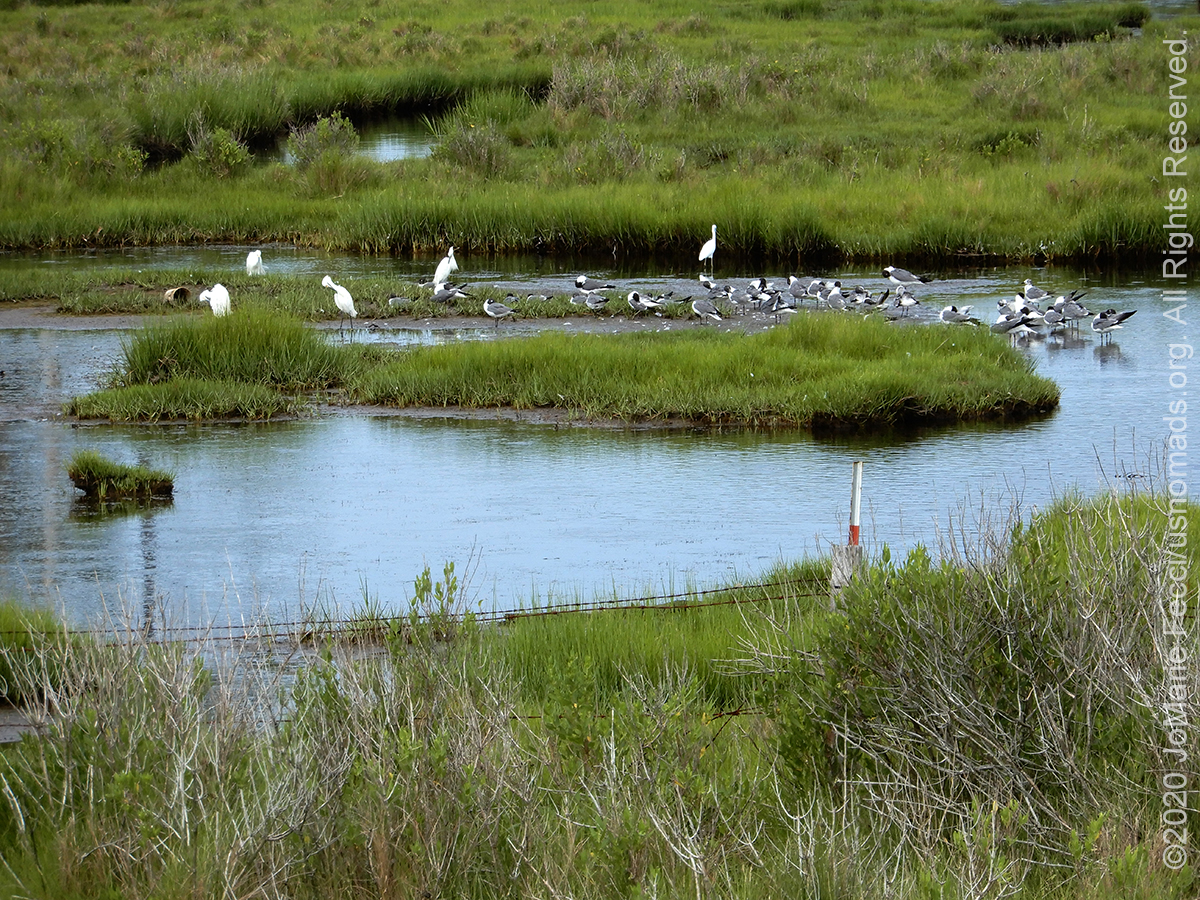
ABOUT THE EXPEDITION
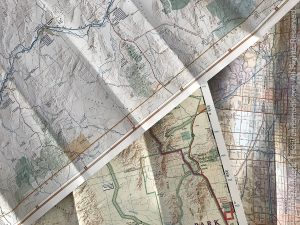
JoMarie Fecci, of USnomads, sets off on a summer roadtrip around the east coast of the U.S. for a few weeks of exploration, camping, and Jeep fun. The focus of this trip is really just enjoying what the road has to offer and checking out some different trails in the region.
WHERE WE ARE
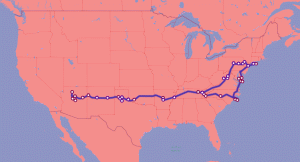
This trip will be a loop starting and ending on Long Island in New York.